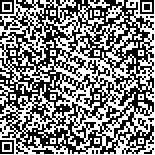| This article has been:Browse 1700Times Download 3996Times |

scan it! |
|
|
| DOI:10.13522/j.cnki.ggps.2020189 |
|
| Using Cloud Model to Analyze Spatiotemporal Variation of Reference Evapotranspiration and Its Determinants in Tableland Irrigation District in Tibet |
|
LIU Jingxia, MENG Qiang, CAO Zhixiang*, LI Yuqing, ZHANG Wenxian
|
|
Water Conservancy Project and Civil Engineering College, Tibet Agriculture and Animal Husbandry University, Linzhi 860000, China
|
| Abstract: |
| 【Background and objective】The response of the reference evapotranspiration (ET0) to climate change and its underlying determinants has attracted increased interest over the past decade, but there is a lack of knowledge about how ET0 in Tibet has changed. This paper is to plug this gap.【Method】ET0 in three irrigation districts, Manla, Moda and Jiangbei, was calculated using the Penman-Monteith equation recommended by FAO based on long-term meteorological data measured from each district. Conversion from quantitative ET0 to qualitative description of ET0 was calculated using the cloud model, from which the homogeneity and stability indexes were used to analyze the temporal variation of ET0 as well as its contributing factors. We also analyzed the meteorological factors that affect ET0 most in the three irrigation districts using the path coefficient analysis.【Result】Annual ET0 in Jiangbei and Moda had been in decrease from 1991 to 2016 at an average rate of 27.97 mm/(10a) and 6.41 mm/(10a) respectively, but increased in Moda at an average rate of 9.99 mm/(10a) though not at significant level. The annual ET0 was most temporally uniform and stable in Jiangbei, and least in Moda. Seasonally, the magnitude of ET0 was ranked in the order of summer > spring > autumn > winter in all three irrigation districts. ET0 was most temporal uniform and stable in winter and spring, and least in summer and autumn. Monthly, ET0 peaked in summer and it was most temporally stable in January, and least in May. Path coefficient analysis showed that ET0 was affected by several meteorological factors, and their significance varied between districts. Average relative humidity directly affected ET0 in Manla and Moda most, while average wind speed directly affected ET0 in Jiangbei more than other factors. Daily sunshine had an indirect effect on ET0 in Moda. 【Conclusion】ET0 in Jiangbei had been in decline since 1991 at an average rate 27.97 mm/(10a) despite being most temporally stable and uniform. Wind speed and average relative humidity were the main factors affecting ET0 in all three irrigation districts. |
| Key words: reference crop evapotranspiration; cloud model; meteorological factors; irrigation district; Tibet |
|
|